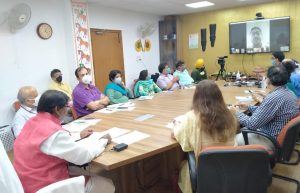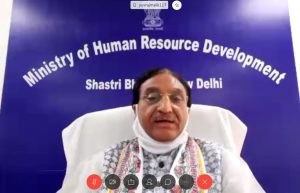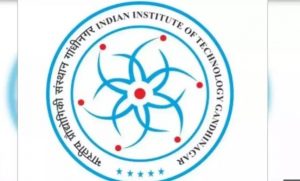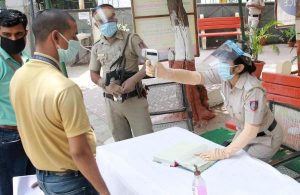Monday, May 18, 2020
Sunday, May 17, 2020
Ancient Indian History Notes PDF Download
vision cse
11:34

Click Here to download Ancient Indian History Notes
Click Here to Like our Facebook page for latest updates and free ebooks
The HINDU Notes – 17th May 2020
VisionIAS
11:27

📰 Coal, mineral reforms to help reduce imports
Coal sector will get a boost as private parties can now bid for 50 blocks: CARE Ratings
•Finance Minister Nirmala Sitharaman’s structural reform measures in the coal and mining sector are expected to give a boost to private investments in the sector and reduce India’s reliance on imports.
•“Our assessment is that if it is implemented at the earliest, these much needed reforms will double these sectors’ contribution to the GDP,” Ajay Kapur, CEO - Aluminium & Power Business, Vedanta Ltd., said.
•Saurabh Bhatnagar, partner and national leader, Metals & Mining, EY India said, “The introduction of competition, transparency and private sector participation in the coal sector will automatically build transparency of mine valuations, force rigorous mine planning and compliance, and invite investments for enhancing operational efficiency to justify the bids made at the time of mine acquisition. These were much-needed reforms in the mining sector as India is a mineral rich country and any sectoral reforms to attract investments which adds to India’s GDP through this sector and save precious foreign exchange are welcome.” According to CARE Ratings, the coal sector gets a boost as the private sector can now bid at the auctions for 50 blocks, enhancing supplies, reducing imports, which is good for the economy. The government also plans to auction Coal Bed Methane (CBM) blocks.
•Tirtha Biswas, programme lead at Council on Energy, Environment and Water (CEEW) said, “The Government of India’s big plan to push coal gasification to replace natural gas in the fertiliser sector would help square energy and food security objectives. However, ammonia produced from coal gasification has a carbon footprint that is 1.8 times higher than that produced from the conventional process using natural gas. This could potentially offset the emissions intensity reductions achieved through investments in renewables.”
•“Elimination of distinction between captive mines and non-captive will ensure a level playing field for players in the integrated metals space,” Mr. Bhatnagar said.
📰 Govt. throws open defence production and coal sectors
GS SCORE Prelims 2020 Test 44 With Solution PDF
VisionIAS
06:22
GS SCORE Prelims 2020 Test 44 With Solution PDF
Click Here to download GS SCORE Prelims 2020 Test 44 With Solution PDF
Click Here to Like our Facebook page for latest updates and free ebooks
GS SCORE Prelims 2020 Test 43 With Solution PDF
VisionIAS
06:21
GS SCORE Prelims 2020 Test 43 With Solution PDF
Click Here to download GS SCORE Prelims 2020 Test 43 With Solution PDF
Click Here to Like our Facebook page for latest updates and free ebooks
Saturday, May 16, 2020
Daily Current Affairs, 16th May 2020
VisionIAS
18:14

1) Armed Forces Day 2020: 16th May

•This day plays an important role in educating society and provide knowledge to the public about the military and the role Armed Forces play in the community. Armed Forces Day is a joint celebration of all six branches of the U.S. military: Army, Air Force, United States Marine Corps (United States Marines), Coast Guard, US Navy, and therefore the newly created Space Force.
2) International Day of Light celebrated on 16 May

•The celebration of International Day of Light will enable various sectors of society worldwide to get indulge in activities that displays how science, technology, art and culture can help in achieving the goals of UNESCO i.e. building the foundation for peaceful societies.
3) “Atmanirbhar Gujarat Sahay Yojana” launched in Gujarat

•Loans under the “Atmanirbhar Gujarat Sahay Yojana” would be available at 2% annual interest while the remaining 6% interest would be borne by the state government. A moratorium period of 6 months would also be provided to the beneficiary in which he would not be required to pay either interest of principal amount during this time. It means that the re-payment of principal and interest will start after six months of sanction. The loans under the “Atmanirbhar Gujarat Sahay Yojana” would be available via written application at co-operative banks, district banks and credit co-operative societies.
4) ‘GOAL’ programme launched for Digital Skilling of Tribal Youth

•The GOAL programme aims to offer mentorship to tribal youth via digital mode and intends to act as a catalyst to explore hidden talents of the tribal youth. This will led to the personal development of the tribal youth and will also add to all-round upliftment of their society.
•The program has a target to empower 5,000 tribal youths in the present phase in order to harness the full potential of digital platforms as well as tools to understand new ways of doing business, explore and connect with domestic and international markets. There will be 1 mentor for 2 mentees in the programme which aims to enable the Scheduled Tribe (ST) youth in remote areas to utilize digital platforms for sharing their dreams and talent with their mentors.
5) Union HRD Minister e-launches 7 titles under NBT’s Corona Studies series

•To document and provide relevant reading materials for all age-groups for the post-Corona readership needs, the National Book Trust India has conceptualized the Corona Studies Series. The first sub series of books focuses on ‘Psycho-Social Impact of Pandemic and How to Cope With’ which has been created by a study Group including seven psychologists and counsellors constituted by NBT.
6) “MIR AHD Covid-19 Dashboard” developed by IIT Gandhinagar

•The “MIR AHD Covid-19 Dashboard” offers different epidemiological scenario-specific information at a city-scale and combines the complex social as well as transportation patterns with state-of-the-art epidemic spread models. It can also share the information about the most critical intersections in the city to the stakeholders, if it decides to implement “drive-through testing”.
7) Delhi Police launches “Thermal Corona Combat Headgear”

•“Thermal Corona Combat Headgear” enables the frontline workers to scan people without coming in close contact with them in public areas such as hospitals, supermarkets and crowded areas. It has also the facility of sending live imagery to a centralised control centre. Along with this, the Delhi Police has also launched “Thermal Corona Combat Drone (TCCD)”. It has can help in seeing the real image of the personnel with the help of day-vision camera fitted with the drone. It also consist of a loudspeaker for giving instructions.
8) GoI & AIIB signs agreement to improve irrigation services in West Bengal

•The West Bengal Major Irrigation and Flood Management Project is expected to benefit about 2.7 million farmers by optimizing the use of surface and groundwater. This would be achieved by improving the irrigation efficiency through infrastructure rehabilitation and modernization. It will also strengthen the flood management in order to boost agricultural productivity as well as to increase incomes in rural areas. Hence, this investment emphasizes on improving the livelihood of farmers and hence boosting the regional economy.
•The total valuation of the project is $413.8 million, co-financed between the AIIB ($145 million), the Government of West Bengal ($123.8 million) and International Bank for Reconstruction and Development (IBRD) ($145 million).
The HINDU Notes – 16th May 2020
VisionIAS
14:21

📰 New law for contract farming
Centre to push through agri-marketing reforms as part of stimulus package
•Making long-pending agricultural marketing reforms the centrepiece of the third tranche of the Atmanirbhar Bharat Abhiyan economic stimulus package, Union Finance Minister Nirmala Sitharaman on Friday announced plans to enact a central law to permit barrier-free inter-State trade of farm commodities and ensure a legal framework to facilitate contract farming.
•The third tranche also included plans to invest Rs. 1.5 lakh crore to build farm-gate infrastructure and support logistics needs for fishworkers, livestock farmers, vegetable growers, beekeepers and related activities, although this includes some previously budgeted money and extensions of existing schemes. The Centre will deregulate the sale of six types of agricultural produce, including cereals, edible oils, oilseeds, pulses, onions and potatoes, by amending the Essential Commodities Act, 1955, Ms. Sitharaman said.
•Several agricultural economists and farm activists welcomed the reform and investment announcements, but questioned the lack of immediate support to help farmers survive the current crisis.
•The Essential Commodities Act was enacted at a time of food scarcity, and needs to reflect current concerns, the Finance Minister said. “Now what is happening is that farmers are producing. There is an abundance of crops, and this sometimes leads to issues because they would want to export, and we don’t permit that. Because of a flip-flop sometimes, farmers don’t get the benefit. Some other times, the consumers suffer. So there is a need to amend the Act,” she said.
No stock limit
•Stock limits will not be imposed on these commodities except in case of national calamity or famine or an extraordinary surge in prices, the Minister said, adding that even these stock limits would not apply to processors and exporters. The Centre has been attempting to reform agricultural marketing through a model Act which it encourages States to adopt. However, it now intends to enact a central law to allow farmers to sell produce at attractive prices beyond the current mandi system, facilitating barrier-free inter-State trade and e-trading. Asked how the Centre could enact a law on agricultural marketing, which remains on the State list, the Minister pointed out that inter-State trade falls in the central list.
•She added that plans were underway to bring in a facilitative legal framework to oversee contract farming, which would provide farmers with assured sale prices and quantities even before the crop is sown and also allow private players to invest in inputs and technology in the agricultural sector.
•Agricultural economist and ICRIER professor Ashok Gulati, who has been advocating these reforms for many years, was elated by the announcement. “These are big, bold steps in the right direction which will benefit both farmers and consumers. This is long overdue and should have been done in Modi’s first term, but certainly the government deserves compliments for converting a crisis into an opportunity,” he said, noting that some of these reforms have been under discussion for two decades.



